Jusant’s unintended burden: should I change the way I rock climb because a video game told me to?
A video game told me to do it, so I did it.
(Quick note: my newest book, Suddenly I was a Shark! My Time with What Remains of Edith Finch is now available for purchase. Or, if you become a paid subscriber to this newsletter, you get the book for FREE, along with most of my other books and essays)
Over the last several months I’ve become obsessed with bouldering.
I don’t use the term “obsessed” lightly. I’ve changed my diet to accommodate better climbing. I wake earlier than I ever have, so I can get to the gym before anyone else arrives. I cancel plans so I can climb. I fall asleep to bouldering-themed podcasts. I’ve even shortened my video game time to allow more time on the wall.
I measure the worth of my days in terms of sent problems.
Hell, I use a term like “sent problem” when “completed climbing route” makes just as much sense.
Other terms I now use daily: dihedral, arete, drop-knee, Gaston, dyno, jug, crimp, and on and on and on.
Where there’s overlap between my two loves–video games and bouldering–I get excited. Plenty of video games incorporate climbing mechanics, but generally, those are limited to a) the loose clambering of an Uncharted game, b) the deceptively rigid approach of a Horizon game, or c) the all-out, do-anything approach of a modern Zelda game. And while those games are all fun, the climbing mechanics are focused on traversal above all else. The “problem” part of a bouldering problem simply isn’t a focus. And that’s okay. These games aren’t meant to be training tools. They are meant to be conduits to fun. Period.
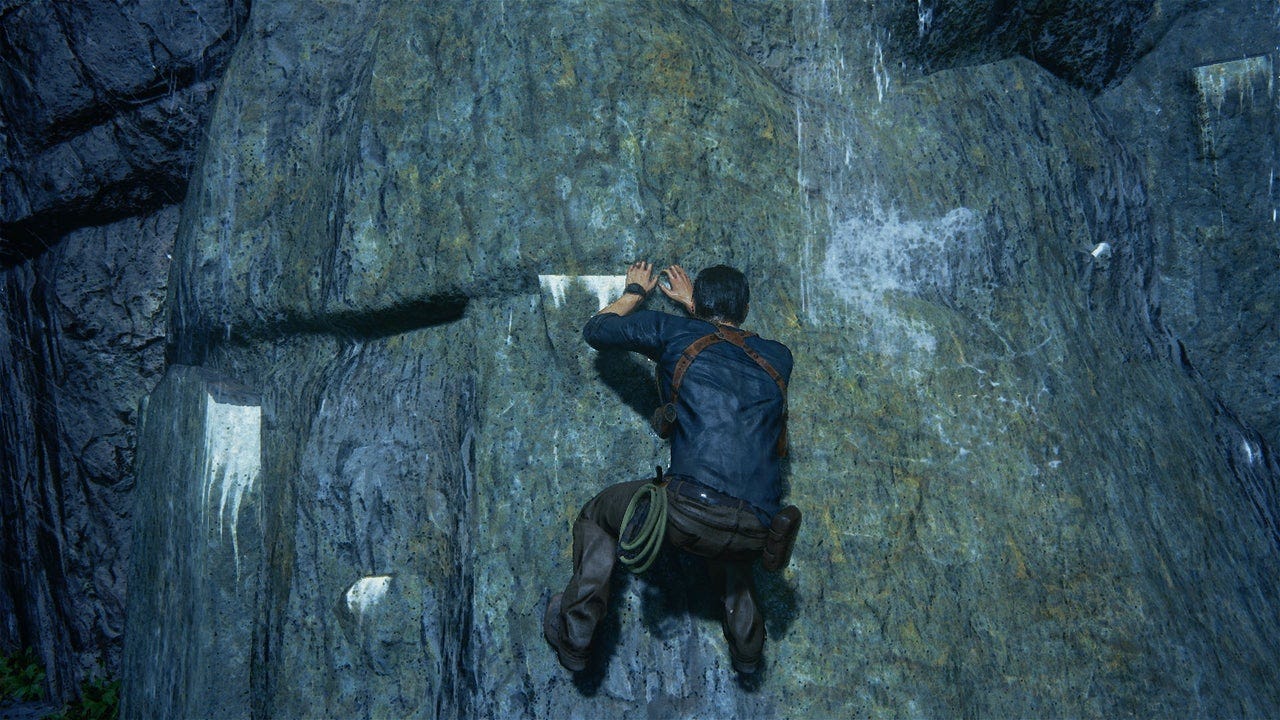
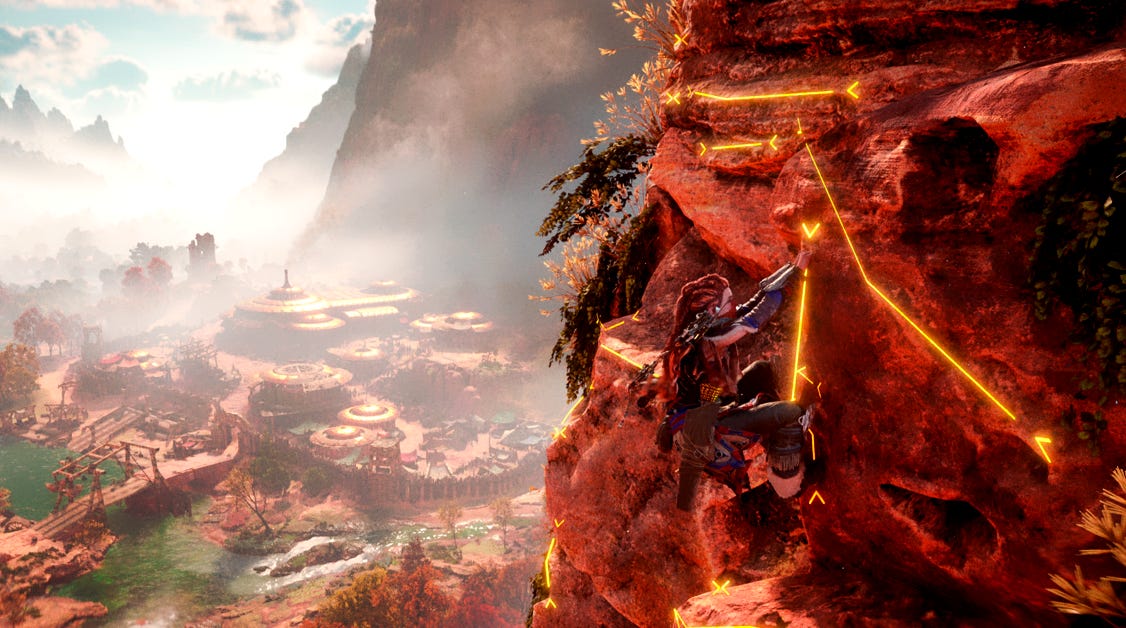
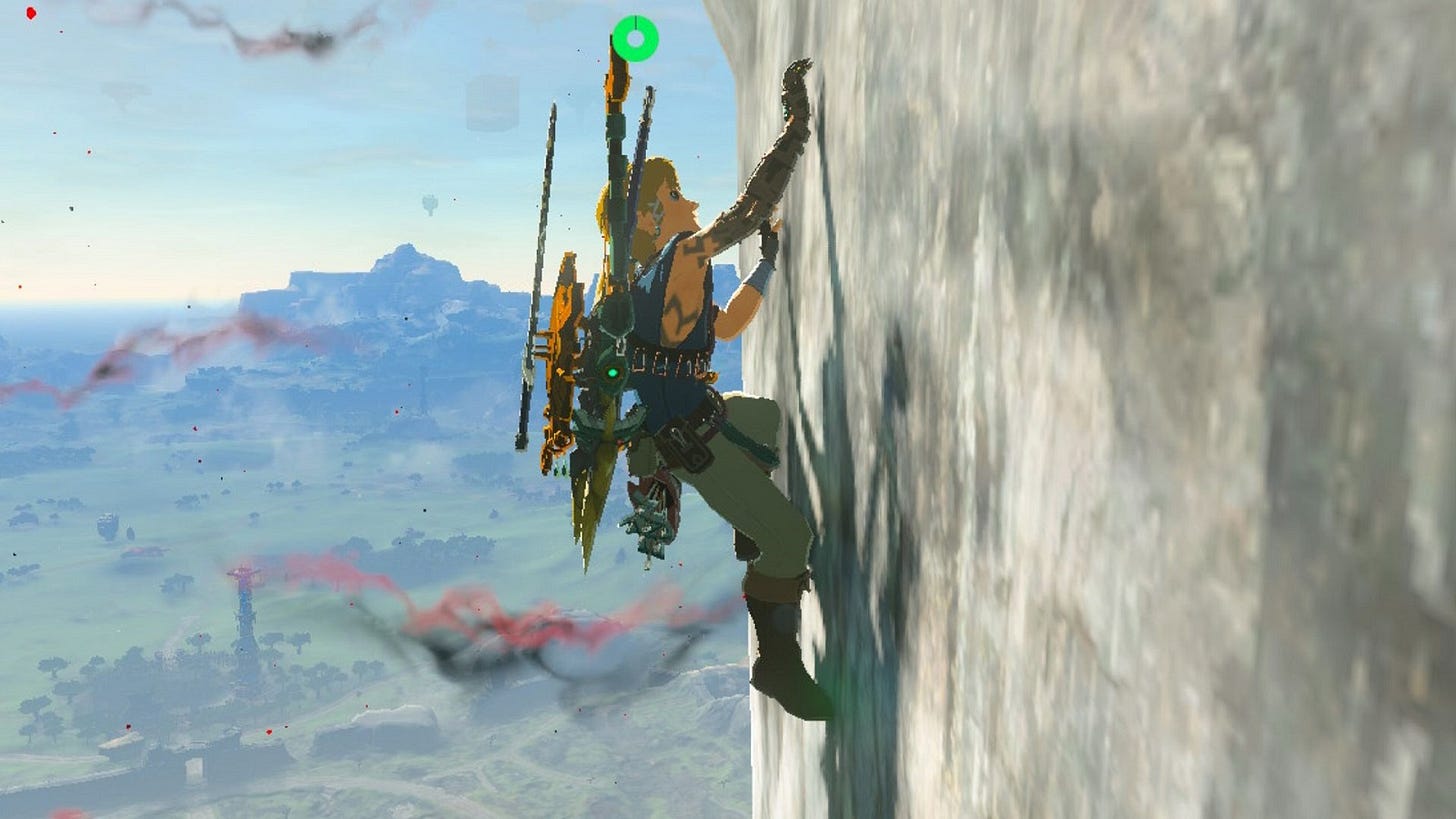
But sometimes, a detail invites that blurred line between training tool and fun. Enter Jusant’s stamina-recovery animation in which the player character shakes out their arm while clinging to the wall.
Though the practicality of this shake is debatable, its use in actual rock climbing is pervasive. The science is at odds about whether or not the move has any physiological benefits. Psychologically, though, I’ll admit it feels helpful.
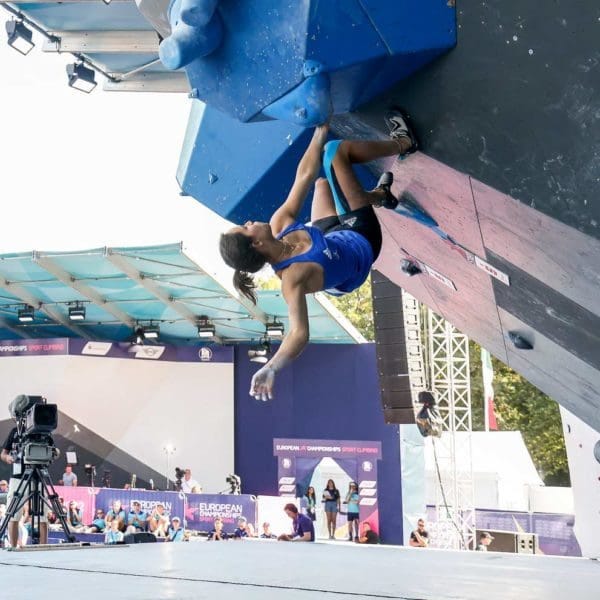
When regaining stamina in Jusant, the player character shakes their arms. Real climbers do this too. The inclusion of this small detail changed my approach to Jusant. Before, I was playing a game that felt like a simple commandeering of rock climbing to support the immersive capacity of a video game. After, I was playing a game that had something to say about rock climbing. The arm-shake is such a specific detail that it burdens the entire game with responsibility it likely didn’t ask for.
I was no longer playing Jusant for fun. I was now playing Jusant to see what it could teach me.
I was playing a game that had something to say about rock climbing.
It’s important to note the difference between Jusant’s rock climbing and my bouldering. Rock Climbing, as a term, generally refers to tall walls and ropes, while bouldering refers to short walls without ropes. Rock climbing tends to be more about endurance and overcoming fear. Bouldering tends to be more about puzzle-solving. But when it comes to shaking out our arms, both rock climbers and boulderers do it. I highlight this difference because, as a boulderer, I was unfamiliar enough with rock climbing to be especially primed by Jusant’s arm-shaking detail. I wanted to learn more about this thing I’m proximate to, but largely unknowledgeable about.
The arm-shaking animation planted a seed of trust. It made me consider the intentionality of every other animation and mechanic in the game. Is the way the player character drives pitons into the wall reflective of real rock climbing? Is the stamina gauge itself true to the amount of stamina a strong rock climber (as Jusant’s player character clearly is) might have? Should I accept the distance between pitons as a lesson should I ever find myself navigating a real cliff face?
Obviously, from a legal standpoint, nobody can hold Jusant accountable for anything that happens to a player when that player tries to climb an actual rock wall. And the developers have said nothing to indicate that they intended Jusant to be a teacher. But in being a game about rock climbing, and by incorporating details to benefit accuracy, it's become a model, a passive teacher. It's not a responsibility the game asked for, but a responsibility the game has inherited.
…in being a game about rock climbing, and by incorporating details to benefit accuracy, it's become a model, a passive teacher. It's not a responsibility the game asked for, but a responsibility the game has inherited.
I love the idea that the intentional approximation of an activity can be educational. Imagine a rock climbing game on an early gaming console, the Atari 2600, perhaps. The game would lack the fidelity for nuance, and nuance is where trust between the player and the developer is established. “Immersion” might be another name for this type of trust. But once fidelity reaches a point where a developer’s attention to detail can be highlighted, the player can’t help but mine that attention to detail for purpose. And what better purpose than the teach the player something?
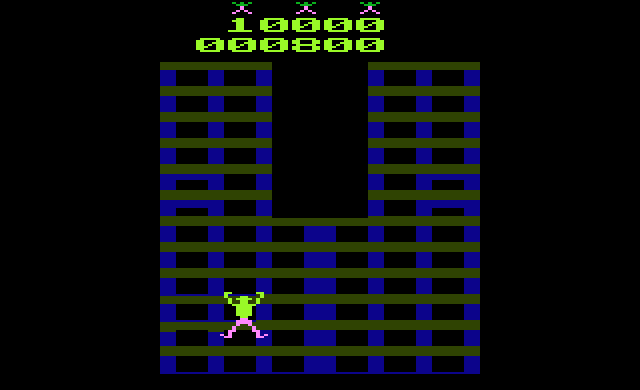
I tend to argue that because video games are meant for human players, their scenarios must be interpretable by human players. Sounds obvious, right? But this simple concept is what enables me to find lessons in video games. The car physics in the Gran Turismo series allowed one of its players to eventually become an actual racecar driver. The Office of Naval Research has indicated that playing first-person shooters could make for better soldier candidates. Video games that focus on authenticity allow players to learn about their real-world proxies in uniquely immersive ways.
However, while video games might be able to induce technique and overall knowledge, they shouldn’t be burdened with motivating people. A person who plays a first-person shooter isn’t primed by the game alone to use a real gun. A person who plays Gran Turismo isn’t pushed by the game alone to race cars. And a Caleb who plays Jusant isn’t likely anytime soon to climb hundreds of feet up along a cliff face with just a rope and some pitons. I’ll stick with bouldering near the ground, thank you.
Do you know someone who might have thoughts about rock climbing and video games? Share this post with them. It’s like a fun, unexpected gift.




